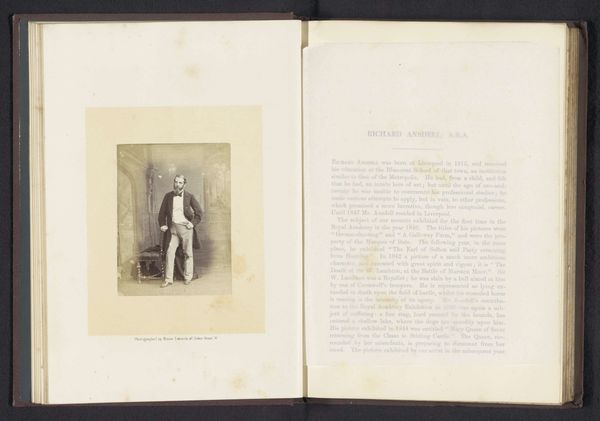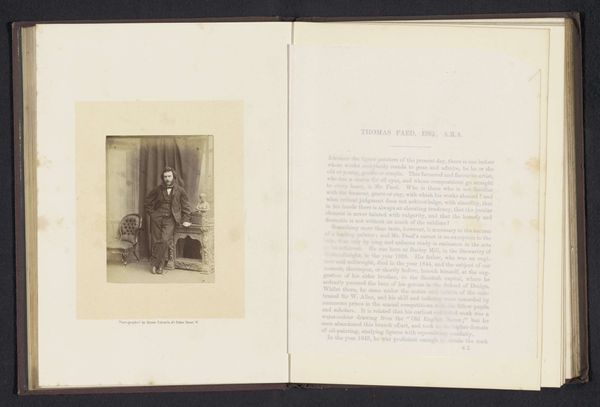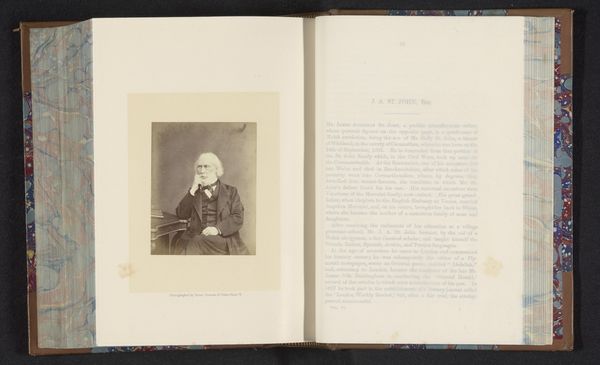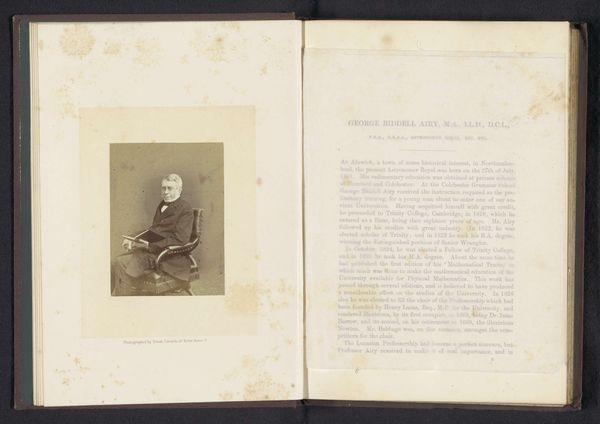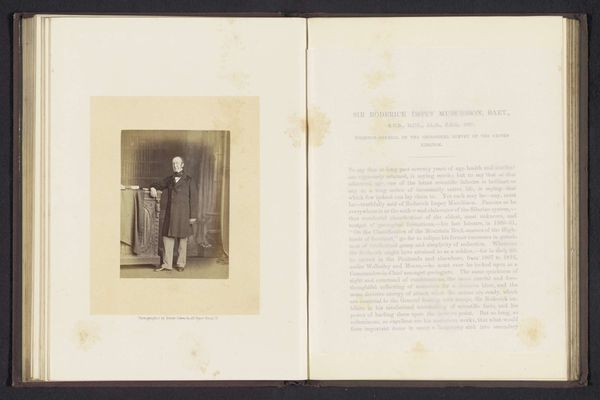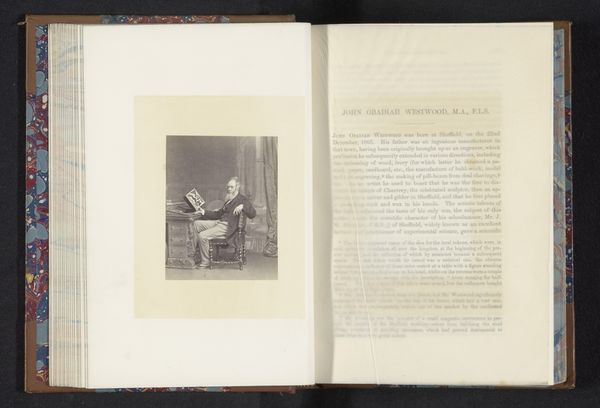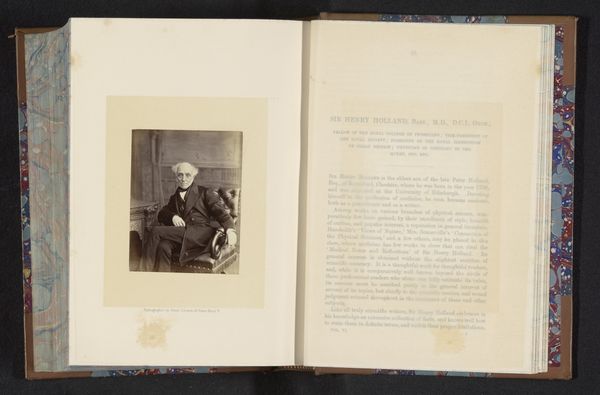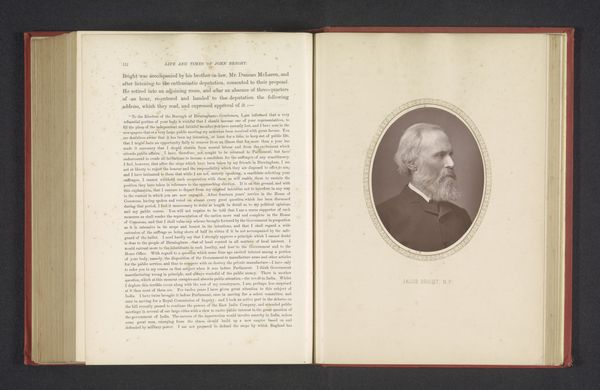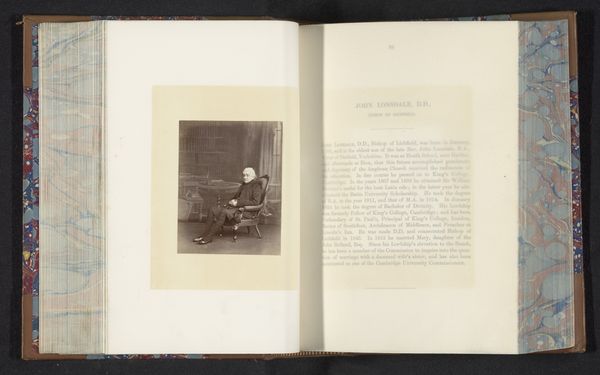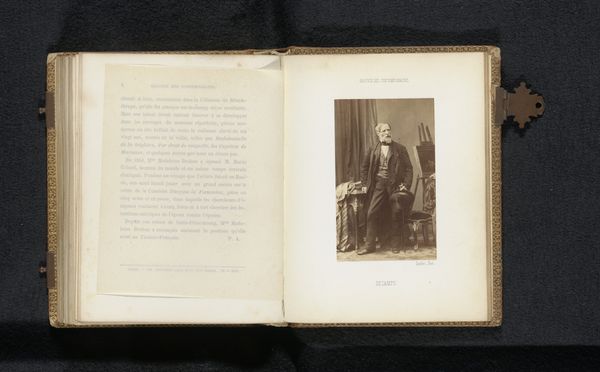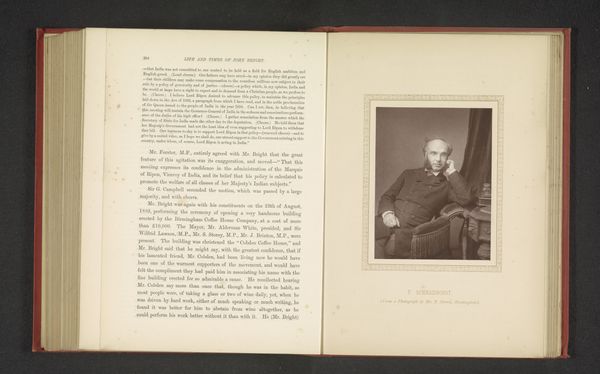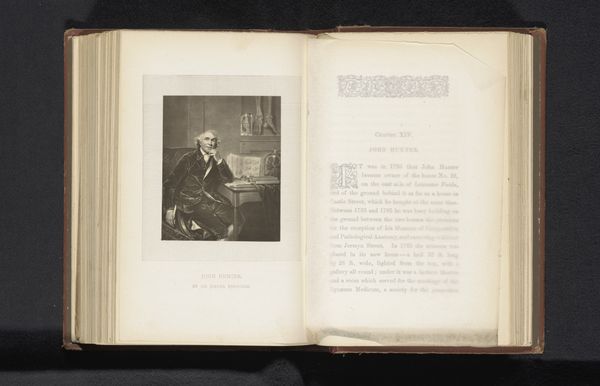
Dimensions: height 89 mm, width 66 mm
Copyright: Rijks Museum: Open Domain
Curator: Looking at this photographic portrait of Martin Farquhar Tupper, captured by Ernest Edwards before 1868, I'm immediately drawn to the material reality of the print. It’s a gelatin silver print; knowing that immediately situates it within specific technological and labor processes of that era. Editor: It strikes me as rather somber, almost melancholic. He's seated, hand to his face, gazing off as if lost in thought. The composition feels quite staged, reflecting, perhaps, the societal expectations for portraying men of status. Curator: Absolutely. And understanding the gelatine silver process is key here. The quality and tone are dictated by very specific materials and chemistry involved. Mass production was underway in many fields. How do the material components reflect industrial and artistic change? Editor: Placing Tupper within his context reveals a complex figure. He was a writer, quite popular in his time but now largely forgotten. This portrait, then, is interesting. It exists in a period grappling with rapid shifts in print culture and authorship, when fame could be fleeting. We must ask questions about celebrity and readership at the time, considering his later fall from grace. Curator: Precisely. This shift impacts portraiture as well, because the new media such as photography alter artistic economies, markets, and networks. We must ask: who commissioned it? What were Edwards' choices in his studio to make Tupper appear the way he does? The print would have been reproduced as well. Editor: Indeed. This image becomes part of the construction—and eventual deconstruction—of Tupper’s public persona. Photography helped shape celebrity and promote a certain Victorian image of intellect and moral standing. What does this image tell us about Victorian ideals of masculinity, and its intersection with authorship? Curator: The image functions, therefore, as a commercial product and an index of social relations within a changing system of artistic and industrial production. Editor: Reflecting on it, this image makes you wonder who will be remembered, and how images play a role in solidifying fame or allowing it to fade away. Curator: And remembering the tangible materials and makers of this photograph reminds us that these processes leave indelible traces of a time of immense change and opportunity.
Comments
No comments
Be the first to comment and join the conversation on the ultimate creative platform.

